Look into the future with us. How will the world — and you — benefit from the expanding Datasphere and from IT 4.0, the next generation IT platform? At CES 2019 this week, Seagate is showing how we and the IT industry must support the technological future upgraded and enhanced by data creation, AI, and security.
The IT architecture of the past will not solve the challenges of tomorrow, which is why Seagate is helping to build a new infrastructure that supports the IT 4.0 era, and the demands of managing the burgeoning Datasphere of the Data Age. We’re looking to the future by defining and enabling a unified data experience.
What does IT 4.0 mean, and how does it disrupt our use of data, solve the future, and utterly change what humanity can achieve?
Endpoints are everywhere
Billions of connected devices that run complex applications have become critical extensions of our lives. The constant connectivity of these endpoint devices is commonly referred to as the Internet of Things (IoT), and its growth rate is expected to double every three to seven years.
The reality of IoT is breathtaking, especially when you realize that billions of remote computing devices generate massive amounts of unstructured data — often while they are offline. This unstructured data must be processed at or near the edge of the network for reasons related to security, cost savings, reliability, speed, and scale.
Leveling up the edge
The enormous complexity of our data-driven world is also dependent on data centers. But not just any data center will do.
In order to be closer to where data originates, the vastness of the world’s data necessitates quick adaptation of new kinds of data centers, at the edge. There are regional, mobile, micro and even orbital data centers that enable blockchain transactions, farming, weather and climate forecasting, anomaly detection in the field and on the factory floor, wearable medical devices, smart home devices, automated vehicles, and so much more.
More and more, enterprises and organizations, individuals, and applications must harness living data to make real-time decisions. Edge computing is complementary to cloud infrastructure, so most businesses can use a combination of both local and cloud analysis to quickly and concisely process data.
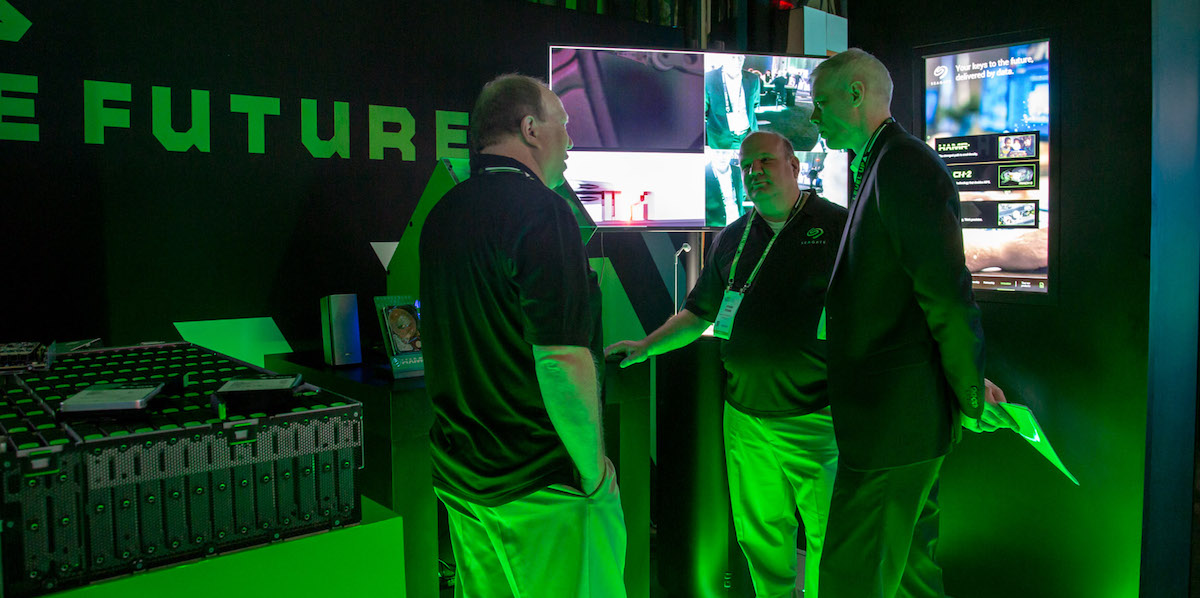
CES 2019 at the Seagate Experience Zone — Endpoint to Edge to Core
The Seagate Experience Zone at CES 2019 shows how data is moving constantly from endpoint devices (PCs and laptops, industrial sensors, gaming systems, drones and more) to the edge (smaller regional data centers) to the core (traditional enterprise and cloud data centers).
As Jeff Fochtman, our VP of Marketing, said as CES began this week, “Our entire space at CES shows how data isn’t stagnant, but is always moving. This year’s ‘Level Up’ theme is meant to be a rallying cry to inspire us to take advantage of this enormous opportunity in data growth and new technology disruption.”
We’re looking at applications as diverse as agriculture, telecommunications, and smart manufacturing.
And as a kicker, we even explore a hypothetical endpoint at the furthest reaches of the edge — exploring the surface of a distant planet! Our visitors can navigate a robot — aided by AI software — to find valuable objects on a distant blue planet. Should be lots of fun! It’s also a good way to illustrate how our SkyHawk AI, the world’s first AI-enabled video surveillance hard drive, supports the heavy workloads of both video and AI streams from analyzing crowds and traffic patterns to identifying irregularities in customer behavior, helping video systems deliver advanced analytics that help security professionals make smarter real-time decisions. SkyHawk AI is purpose-built with a comprehensive set of surveillance-optimized features you can check out here.
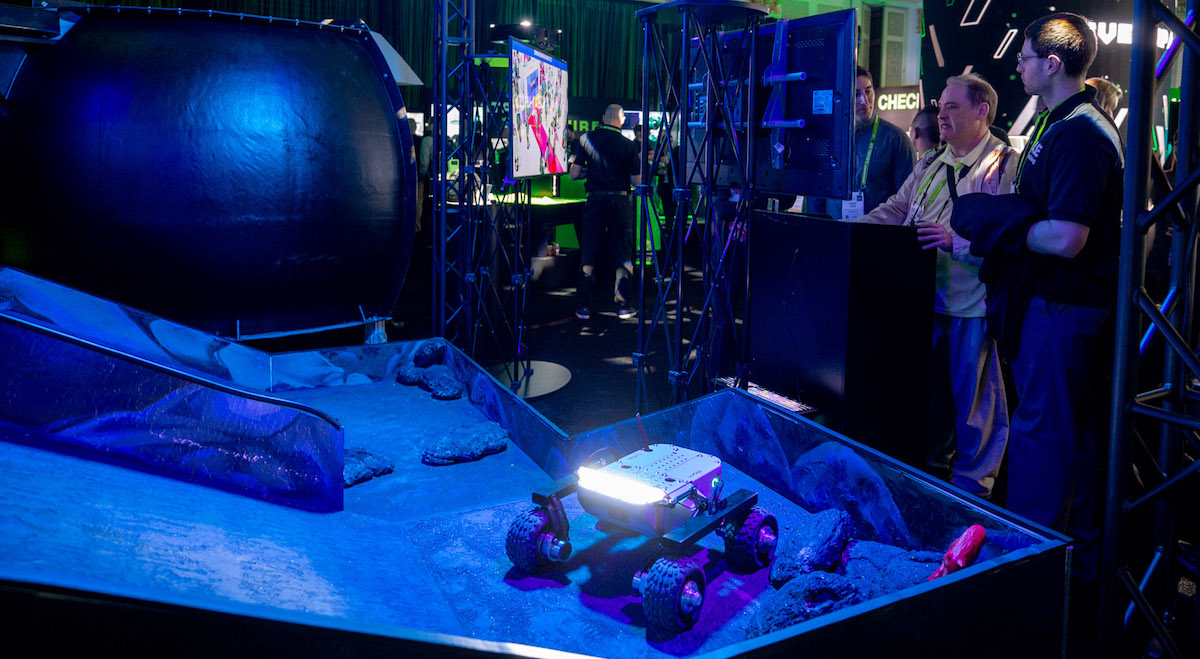
What are CES visitors learning about our evolving IT data architecture?
Seagate and our partners are showcasing amazing conceptual and technology demos. And we’re discussing key principles and examples of IT 4.0 use cases — how IT 4.0 operates in real world — to help customers understand how and why IT is evolving right now, and where it will take them in the next years, ready or not.
In the video below, I talk a little bit about IT 4.0 and how a new wave of data infrastructure will change how entire industries function. Co-located data centers will transform how industries like agriculture and smart manufacturing will leverage data analytics to increase efficiency and effectiveness.
IT 4.0 — data, AI, and the movement of data processing to the edge
Our CES 2019 experience zone creates a visual representation of the aspects that drive these changes — data, AI, and the movement of data processing to the edge.
One thing that is clear is that there is no single “edge.” Edge is not a device; it’s a location — and the specific IT architecture at a given edge location can vary a lot. So we’re highlighting several different form factors that may be found at the edge, with a few key use cases where data and AI help reduce inefficiencies, unlock new value creation, and foster new ways of solving even the most complex problems.

Some of the interactive experiences our CES visitors can explore include:
- Data Endpoints: Different sensors provide mission-critical information to push data analysis forward.
- Data at the Edge: Micro-modular data center enables real-time insights closer to the source.
- Data Arm: Advanced robotics allow companies to level up through precise smart manufacturing.
- Data Dome: 180° video highlights data’s impact on agriculture to feed the next billion people.
- Data Sandbox: Data visualization shows real-time topographical changes.

We’re exploring in depth three particular examples of IT 4.0 use cases — agriculture, telecommunications, and smart manufacturing. All three applications benefit from the same fundamental IT structure: endpoint, edge, and core (cloud).
Each of the use cases is driven by these IT architectural elements: data collection endpoints, data movement products, and a micro-modular edge data center.
Read on to learn a bit more about each of these elements. Then continue deeper into the article to dig in to our three IT 4.0 use cases.
Data collection endpoints
A working ecosystem is critical to new technology. Today’s enterprises and consumers expect full solutions, not pieces and parts, that can introduce efficiencies and upgrade challenges. Today, companies work together so they can focus on their strengths and deliver more complete solutions to consumers. At CES 2019, Seagate is demonstrating a variety of sensors, or data flow endpoints, that allow us to tell a full story and deliver an end-to-end, unified data experience for the enterprises who depend on us:
Davis Instruments is supporting our agriculture use case by providing a weather station. A group of comprehensive sensors are planted alongside crops all over the world because they are affordable, accurate, durable, and easy to use. Farmers are enabled with real-time data about weather conditions regardless of geographical disbursement of fields.
Swift Sensors is supporting our smart manufacturing use case by allowing us to display their vibration sensor, a critical component to a factory environment where even the slightest movement can cause defects in assembly. In addition to the manufacturing sensor, we’ll also show a Swift temperature, humidity, and dew point sensor to enhance our agriculture use case. In addition, we’ll be displaying a Swift sensor bridge, so visitors can see how data gets from sensors to storage. The bridge automatically detects sensors transmitting their data via Bluetooth Low Energy (BLE) or RF, then the on-premises bridge appliance securely transmits data.
A drone provided by Seagate partner Hangar will show how enterprises can eliminate the complexity of collecting bigger, better data and how they can turn that data into previously unseen insights and economic opportunities.
A DJI drone showcases how flying sensors are being used for agriculture and telco intelligence.
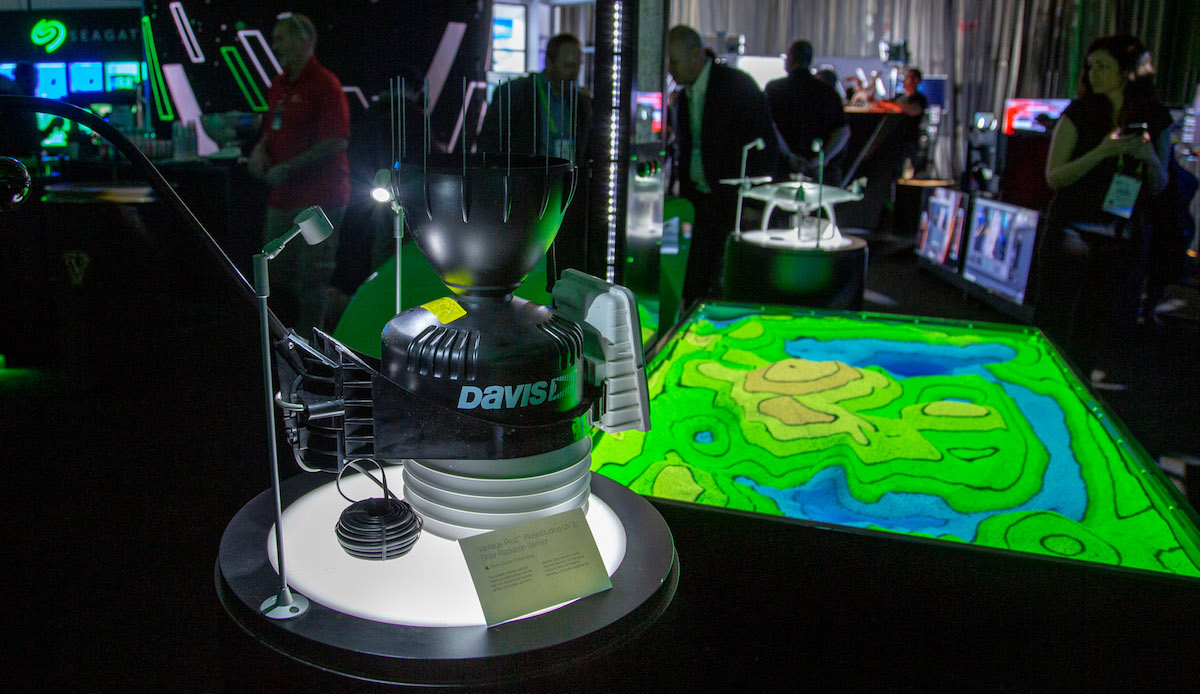
Data movement products
An important part of our story is showing visitors how we are enabling data to seamlessly flow from the endpoint to the edge to the core. Unlike solutions that rely heavily on latency-heavy Wi-Fi connections — and that offer only movement from endpoint to core — we’re demonstrating an efficient solution built for the way we will use data in the future:
From endpoint to edge: Data is ushered wirelessly from sensors via Wi-Fi and through a secure bridge to the Seagate Pathfinder, a robotic, high-capacity mobile data storage transporter that takes data to the micro-modular data center.
From edge to core: Moving data from the edge data center to the cloud (sometimes called “the core”) no longer poses the challenges of the past. Discover how a Seagate data shuttle takes devices from the Vapor Chamber and delivers them to the public cloud via truck. This is easier and faster than a high-speed data connection, which can take months to transfer the amount of data stored in the chamber. This way, data arrives safe and sound at the cloud the next day and is offloaded onto racks of Seagate pods (also known as “petabytes of data storage”) that are self-healing, high-capacity storage devices that require virtually no maintenance.
Once in the cloud, data can be used for forensic analysis by researchers who want to improve the algorithms. Analysis of the drone data can be outsourced to a data analyst to identify long-term trends, such as profit identification for the current year. And when new software and analytics are available, they can use the data for additional intelligence.
Parameters can be set in the software to classify which data is important to keep and which can be discarded after forensic analysis. Thus, the right data will be safely archived in the data center using Seagate enterprise high capacity data solutions, including the Exos E 4U106, which houses 106 individual drives, each holding up to 14TB of data.
Micro-modular edge data center
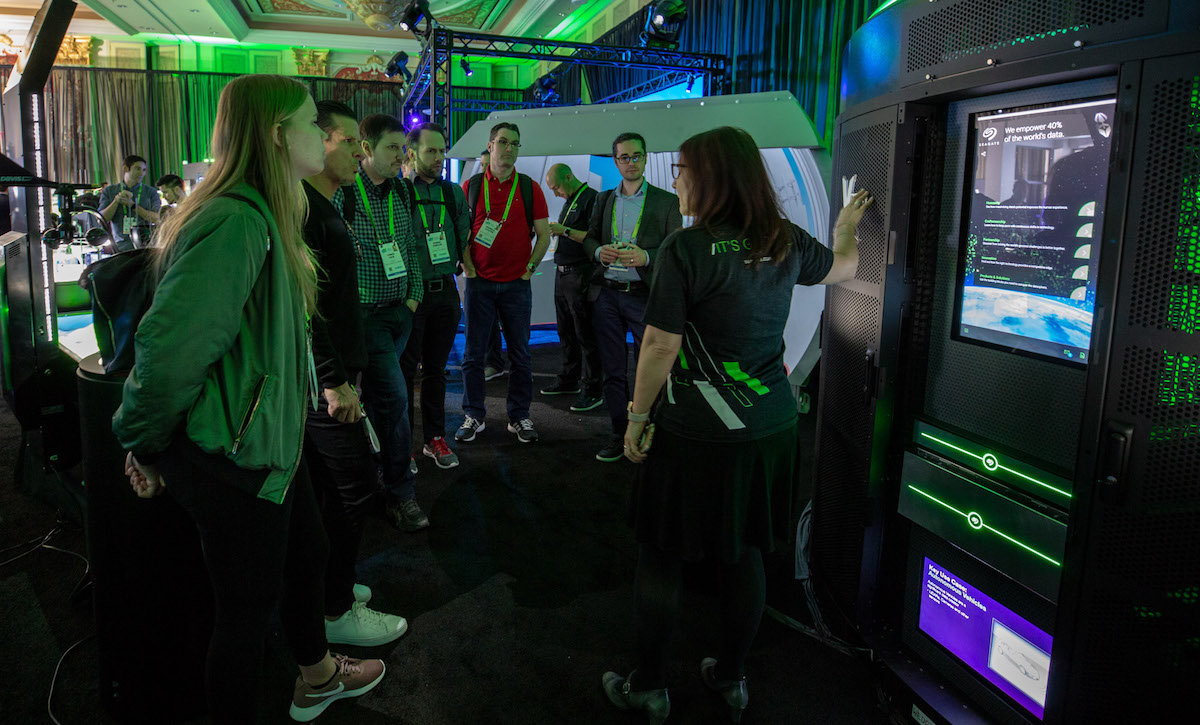
The Vapor Chamber is a patented cylindrical enclosure system of hardware and software technologies developed by our partner, Vapor.IO. It efficiently houses and cools IT equipment at the edge where data is kept closer to the source of the endpoint that is collecting it. Edge data centers are becoming increasingly important, as enterprises across industries are driven by connected, or IoT, devices that produce massive amounts of data only valuable in a constant feedback loop. This necessitates that the data be housed closer to where it is created rather than traveling to the cloud and back to complete communication. In most cases, the sheer amount of data created by these devices makes it virtually impossible to use device to cloud infrastructure.
The Vapor Chamber is an efficient way to build and operate edge data centers, and is designed to house extremely large volumes of data in a small space. Its core value is that it’s built to thrive outside of “normal” data center environments. It can sit in a hospital, power plant, farm, or in a desert. More than a traditional “on-premises” data center, it is built for edge computing.
The chamber is populated with Seagate Exos and Nytro systems that offer interchangeable components (such as power supplies, controllers, and disk enclosures) so that technology and capacity adapt easily as the consumer’s storage needs evolve, such as the Exos X 5U84 system filled with 14TB Exos drives, the Nytro X 2U24 all-flash array and hybrid system filled with Nytro drives, and the Exos X 2U12 system filled with 166TB in two racks.
So in the end — how does humanity benefit from this evolving IT infrastructure, and the new data ecosystem called IT 4.0? Let’s look at our three example use cases:
IT 4.0 and Agriculture
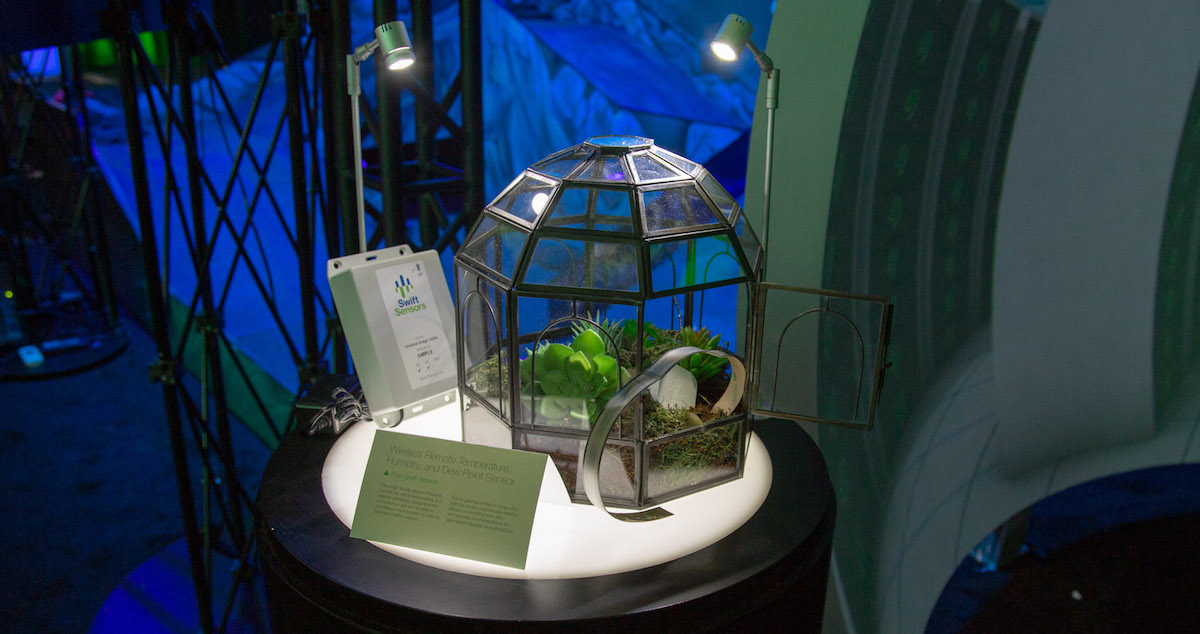
Modern agricultural practices demand a delicate balance of old and new. As with any industry, it is all of our responsibility to ensure that we don’t fix what isn’t broken, and that forward progression is both ethical and responsible. In other words, we need to ensure that technology improvements are for the betterment of society as a whole. As industries across the board make the leap from analog to digital, it is more important than ever to ensure that the changes we are making are changes for the good of all, not just the good of some.
Agriculture is no exception. The goals and wisdom of this industry, which forever relied on ages-old experience and information handed down over generations, are now being empowered by technology and data, not replaced by it. Data is used to enhance what agriculturists and farmers already know. Data collected from a variety of endpoints and processed at the edge provides farmers with deeper analysis or trends over time that will inform long-term decision-making about when to plant, how much, where, what will thrive, and what will not. Drones inform daily decision-making by monitoring many fields simultaneously, and robots free up physical time for humans to perform tasks only they can.
Seagate solutions enable data movement from the endpoint to the edge to the core, allowing these next-gen technologies to help farmers feed the next billion humans.
IT 4.0 and Telecommunications
Telecommunications has always been on the cutting edge of technology adoption and development, and has led other industries in connecting devices and automating internal processes to introduce efficiencies into workflows.
But automation is no longer enough. Telco now needs more actionable intelligence, both in their products and in their operations.
With IT 4.0, operations can be automated based on artificial intelligence and machine learning, reducing the overall cost of doing business. Autonomous networks will be increasingly controlled by software, solving the 5G proliferation challenge. All the while, adaptive networks will improve the quality of service by learning patterns and applying them to operations.
IT 4.0 and Smart Manufacturing
Seagate itself is a major manufacturer and we’re always aiming to make factory processes “smarter” — for example, to improve output quality, simplify component integration, increase efficiency, or reduce energy use and carbon emissions.
Since the first industrial revolution in mid-18th century, the manufacturing industry is constantly reinventing itself. The past few years have witnessed critical changes associated with high rates of automation in different manufacturing segments. As the price of automation goes down, more businesses are expecting it to shape the way their factories operate. Whether you call it Factory of the Future (FoF), Industrial Internet of Things (IIoT), Connected Factory, or Smart Factory, it’s all about the digital evolution to Industry IT 4.0.
A “Smart Factory” is a flexible system that can self-optimize performance across a broader network, self-adapt to, and learn from new conditions in real or near-real time, and autonomously run entire production processes.
For instance, by analyzing a stream of data from various inputs — from cameras to code readers and sensors for velocity, proximity, pressure, contact, displacement — a factory’s Prognostics and Health Management system can detect anomalies, diagnose the failure mechanism, and predict the remaining useful life of a manufacturing system. Automated intelligent analysis that detects failures earlier can alert maintenance engineers, so they can prepare for the failure and have the right personnel and parts available.
Meanwhile an Overall Equipment Effectiveness Tracking system can help identify the efficiency of the production cycle. By automatically tracking the percentage of planned production time that is truly productive, engineers can isolate bottlenecks and optimize the operations between different production lines.
Automated logistical robots will interact with and react to these predictive systems to more effectively move manufacturing parts from storage areas to prediction lines, as well as products from one station to another. So this digital transformation doesn’t only enhance the human-robot communication; it goes further to allow robots, systems, and sensors to share information with one another.
In tomorrow’s factory, Artificial Intelligence ought not to replace humans, but rather create different types of jobs where engineers and operators play a focal role based on the digital information communicated by robots and algorithms.
These are just a few examples of the real human benefits made possible by IT 4.0 and the Data Age. They also provide some hint of just how enormous the datasphere needs to be to support these advances. The emerging IT 4.0 landscape will support humanity with new ways to ease and improve the human decision-making processes.
Without storage systems and devices designed explicitly for cloud and edge computing, the datasphere would cave in on itself. Digital life as we know it would cease to exist. So Seagate’s Exos and Nytro solutions are designed to make the lives of data center professionals infinitely easier and far superior by providing smart security paradigms, blazing responsiveness, groundbreaking capacities, and clever power management — all necessary to enable device-to-device communication.







